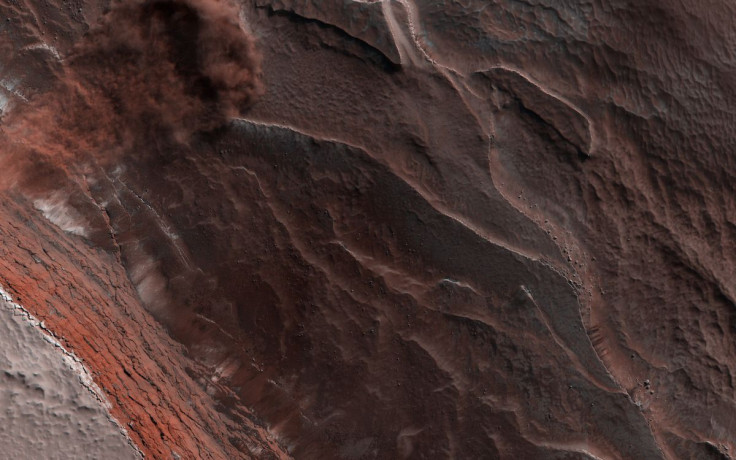New Study Uncovers Cause Behind Unusual Landslides On Mars

KEY POINTS
- Some landslides on Mars defy laws of physics
- New study explains how these landslides form
- The findings of the study can be applied to landslides on Earth
In a new study, a team of researchers offered a possible explanation behind certain landslides on Mars that seem to defy the laws of physics. The researchers noted that the same concept can be applied on Earth to prevent catastrophic events caused by landslides.
On the Red Planet, a type of ground movement has been identified as long, runout landslides. These occur when huge volumes of rock and soil debris move down across the slope of a hill or a mountain.
In some instances, this kind of landslides can move downslope at speeds of almost 360 kilometers per hour, covering distances over flat surfaces of up to tens of kilometers. Due to its unusual nature, this type of landslide suggests that there is no friction at play to slow down the moving debris.
Scientists previously noted that this may have been due to the presence of ice, which could explain the lack of friction. But, according to a new study published in Nature Communications, long, runout landslides could be caused by the movement of rock layers beneath the landslide.
Through 3D computer models, the authors of the new study discovered that during landslides, the collisions and vibrations created by rock particles caused the layers of light and heavy rocks to move.
“These layers would have been created by vibrations and collisions of rock particles at the bottom of the slide with the rough surface of the valley,” the researchers wrote in an article posted on The Conversation.
“This would have initiated a ‘convection process’ – transfer of heat by movement – that caused upper denser and heavier layers of rock to fall and lighter rocks to rise,” they continued.
The researchers explained that as the layers of rocks changed positions, the motion of the entire landslide gets extended. The same idea can be applied to areas on Earth that are prone to landslides.
According to the researchers, identifying the characteristics of landslides in these areas can greatly help in preventing accidents from happening in the future.
“On Earth, the incomplete record of such catastrophic events can lead to misinterpretations and overlooking of the hazard of these landslides,” the researchers explained. “But, as they happened in the past, they will happen in the future, posing great risk to infrastructures and people's lives.”
© Copyright IBTimes 2024. All rights reserved.





















